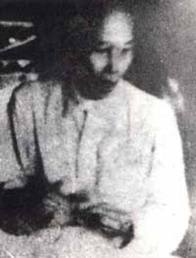ON HIS ADVICE, the national hero dropped the last three names in his full name and thus enrolled at the Ateneo as ‘Jose Protasio Rizal.’
Paciano,the second of eleven children of Don Francisco and Doña Teodora, is the only brother of Dr. Jose Rizal.
Had Paciano owned a Facebook account and you were his friend, you would not be entertained that much by looking at his photo albums. Paciano had only two known pictures—one is a ‘stolen shot’ by a nephew during a family reunion, and the other, taken posthumously, of his corpse. A descendant explained that Paciano—unlike his brother who even frequented photo studios for his pictures—did not want to be photographed. The reason was that “he was a wanted man in the past and if there were no photographs of him, then it would be hard for the authorities to arrest him. He could walk everywhere without being recognized”
Paciano had a very fair complexion and rosy cheeks. His descendants were quick to add that their lolo was more handsome than the national hero, and much taller, about 5’7” to 5’9. “When he died and the body was brought to the funeraria, his feet stuck out of the coffin, which was too small for him”
This description though was neither relative nor one-sided, for it was confirmed by Jose Rizal himself. In a letter to Blumentritt, he wrote: "Paciano is more refined and serious than I, taller, more slender, and fairer in complexion than I with a nose that is fine, beautiful and sharp pointed, but he is bow-legged”
Being Jose’s second father
Acting as Jose’s caring guardian, Paciano brought him to Biñan to study under the tutelage of Justiniano Aquino Cruz. Paciano also accompanied the young Rizal in taking the entrance exam at the College of the San Juan de Letran and in matriculating instead at the Ateneo Municipal. Paciano even looked for Jose’s boarding house in the Walled City.
In choosing a course to take at the University of Santo Tomas, Rizal was said to have originally thought about law. Paciano however warned him that being a lawyer could be problematic, for one might find himself backing a wrong cause. Because he also wished to cure their mother, Jose thus opted to take medicine instead.
The Revolutionary Paciano
After his brother’s execution in December 1896, Paciano joined the Katipuneros in Cavite under General Emilio Aguinaldo. He was not new to reform and revolutionary organizations. He had been an avid member of Propaganda Movement, soliciting funds to finance the organization and the nationalist paper ‘Diariong Tagalog’.
As Katipunero, Paciano was later commissioned as general of the revolutionary forces. He was said to have been elected too as secretary of finance in the Department Government of Central Luzon. Assigned as revolutionary commander in Laguna.
During the Philippine-American War, Paciano continued to fight for Philippine independence in his area of jurisdiction in Laguna. During the revolution, he was said to have had several meetings with Apolinario Mabini. He was released soon after on the power of his promise that he would lead a peaceful life.
On April 13, 1930, Don Paciano died of tuberculosis at his Los Baños home at age of 79. His remains were buried in the North Cemetery in Manila. His life exemplifies that ‘a brother is a brother’ and reminds us that siblings must stand united and remain loyal to each other.



